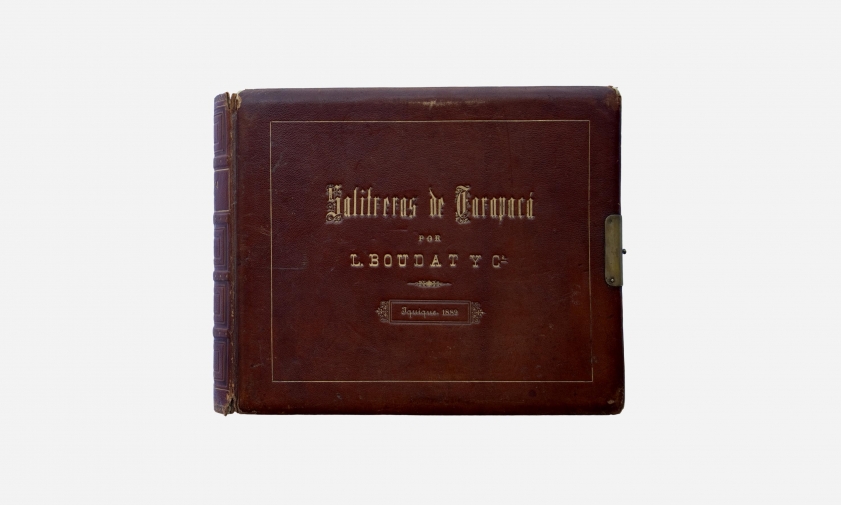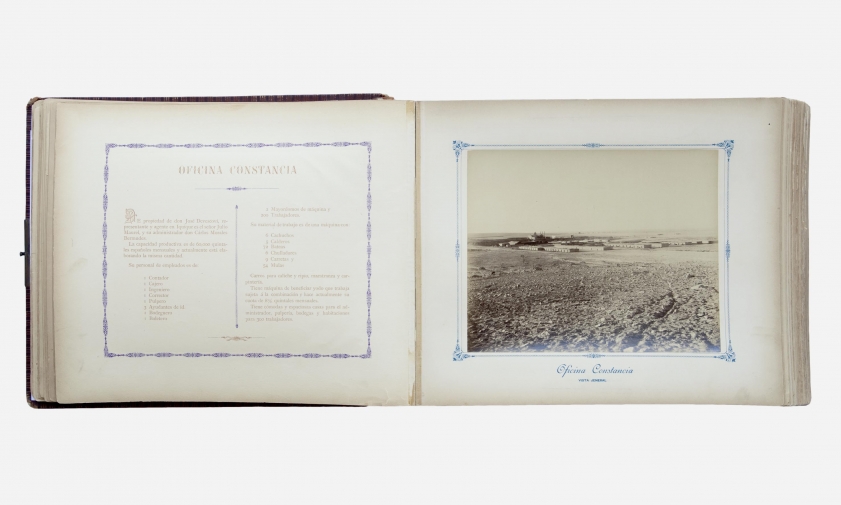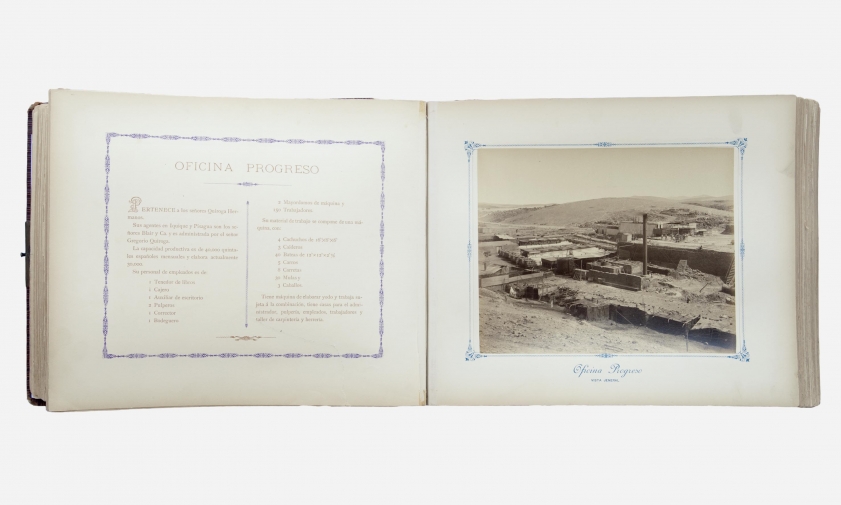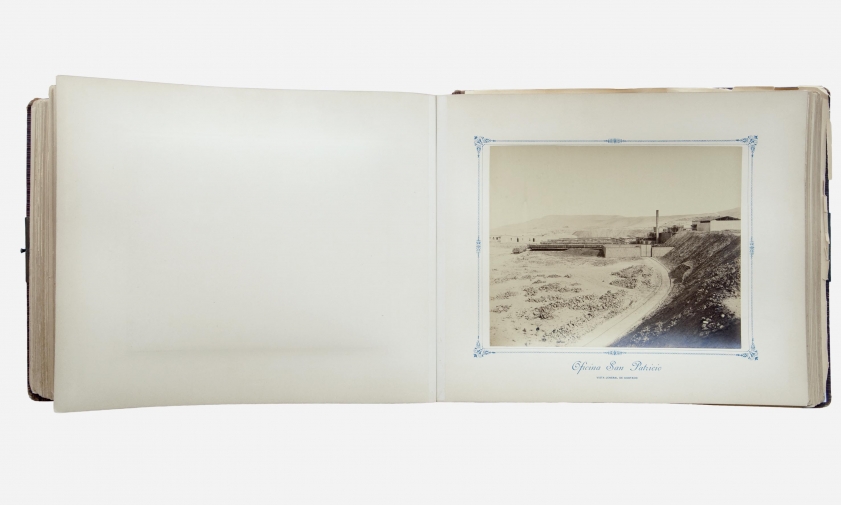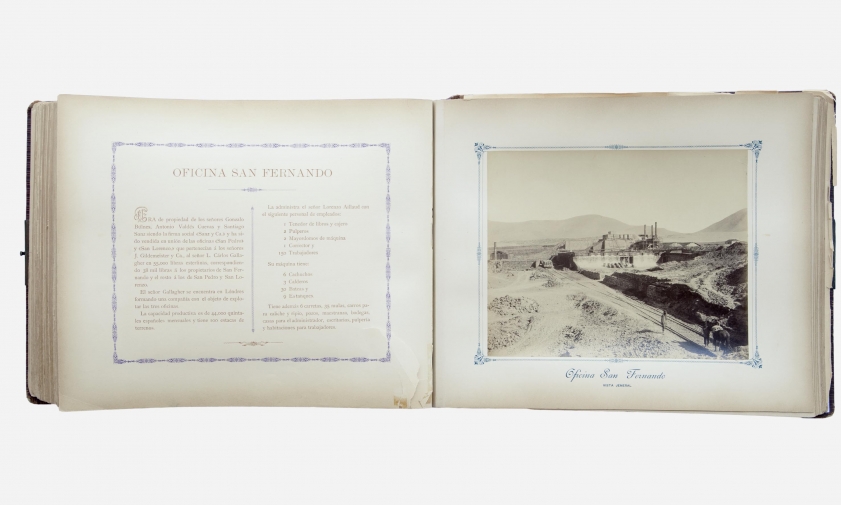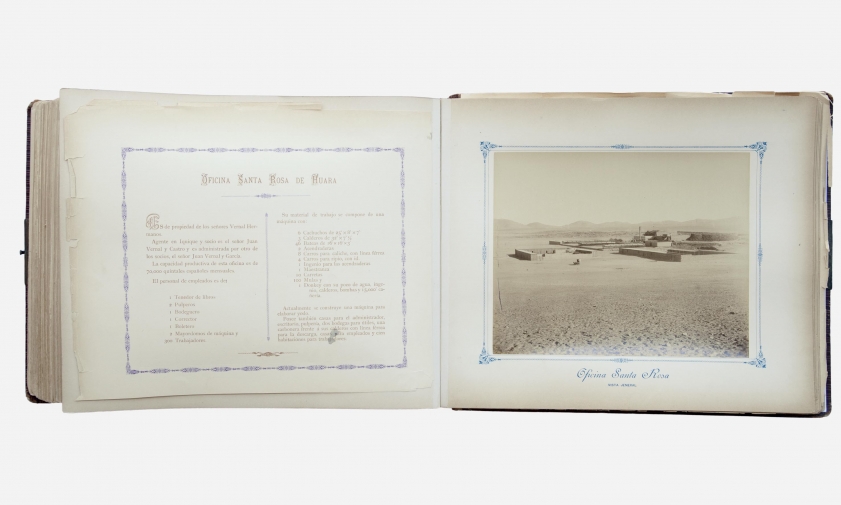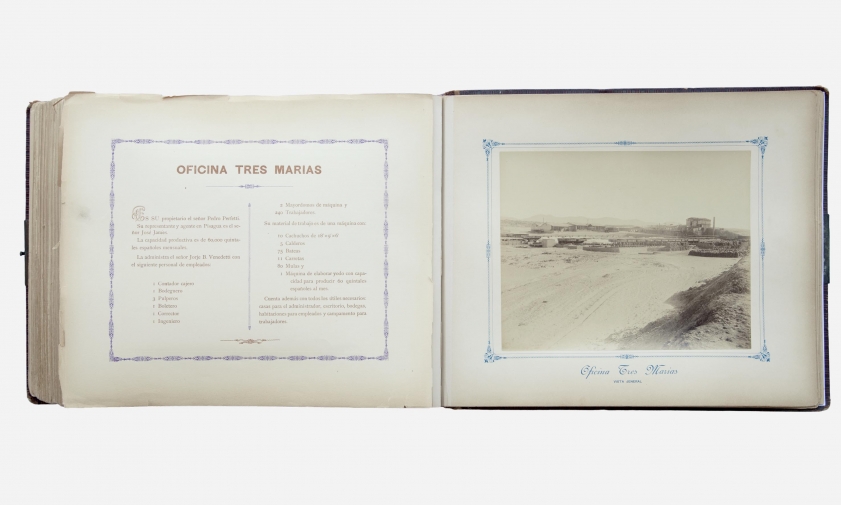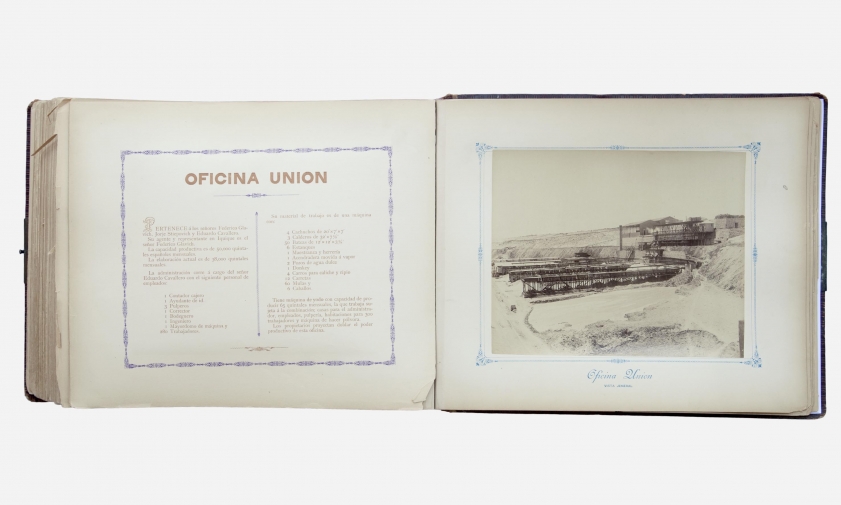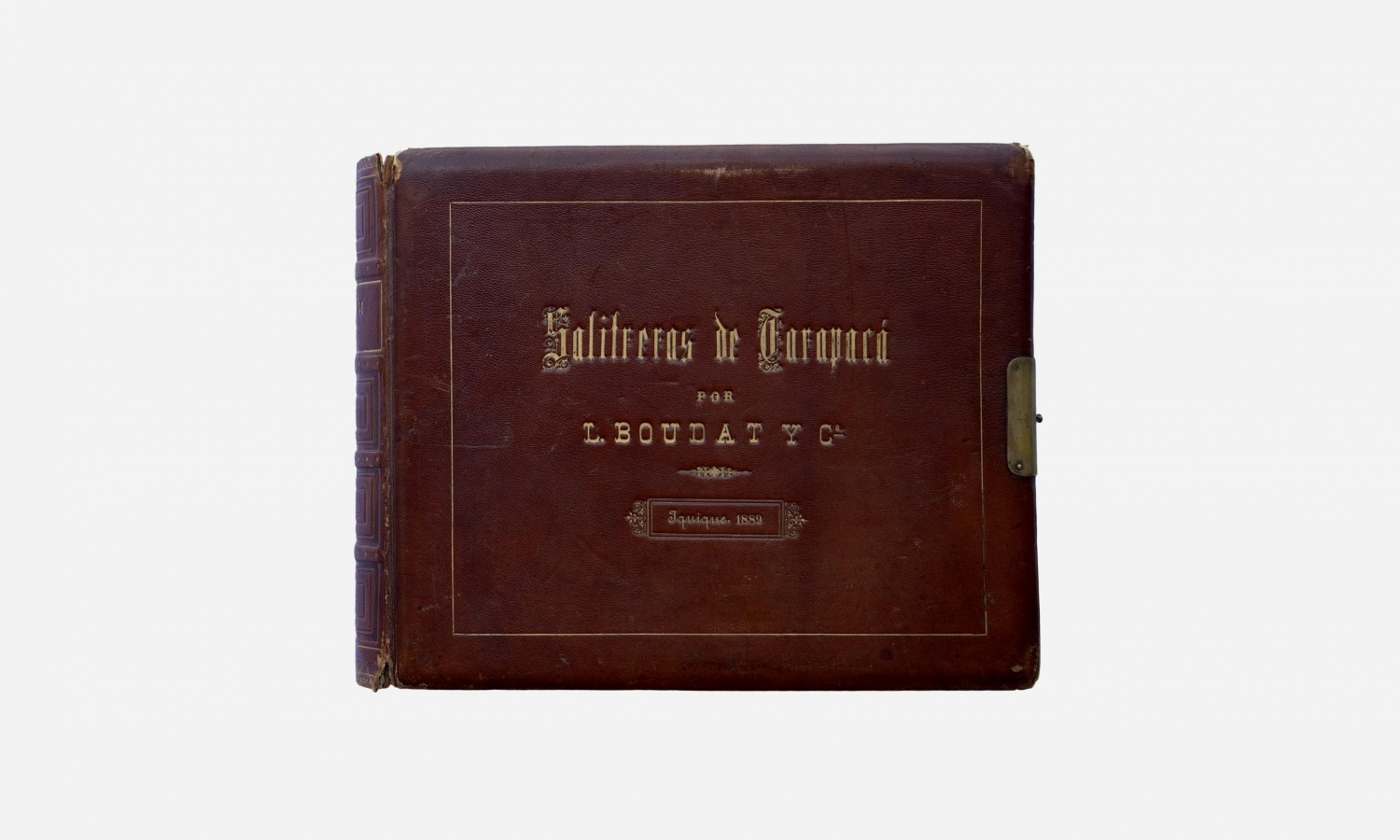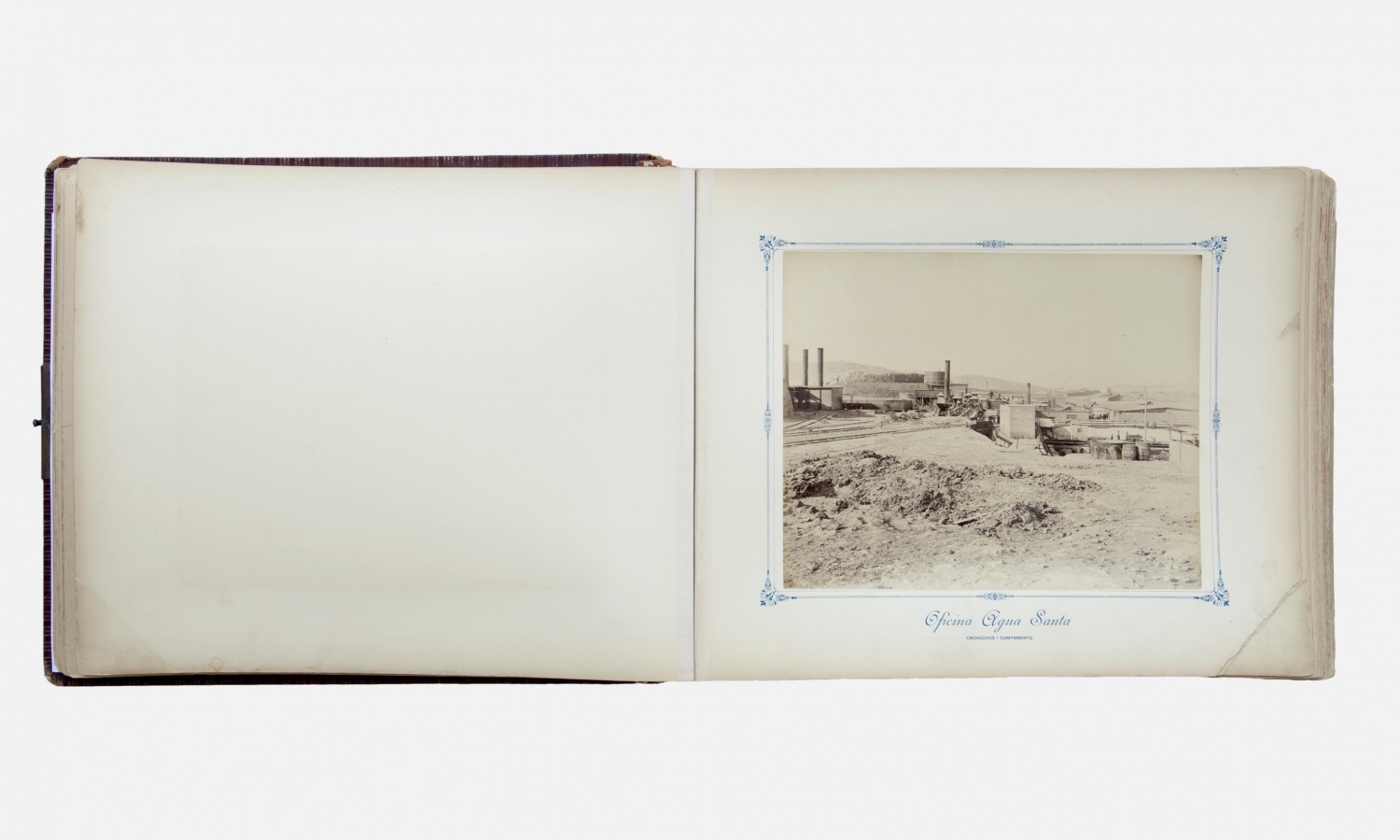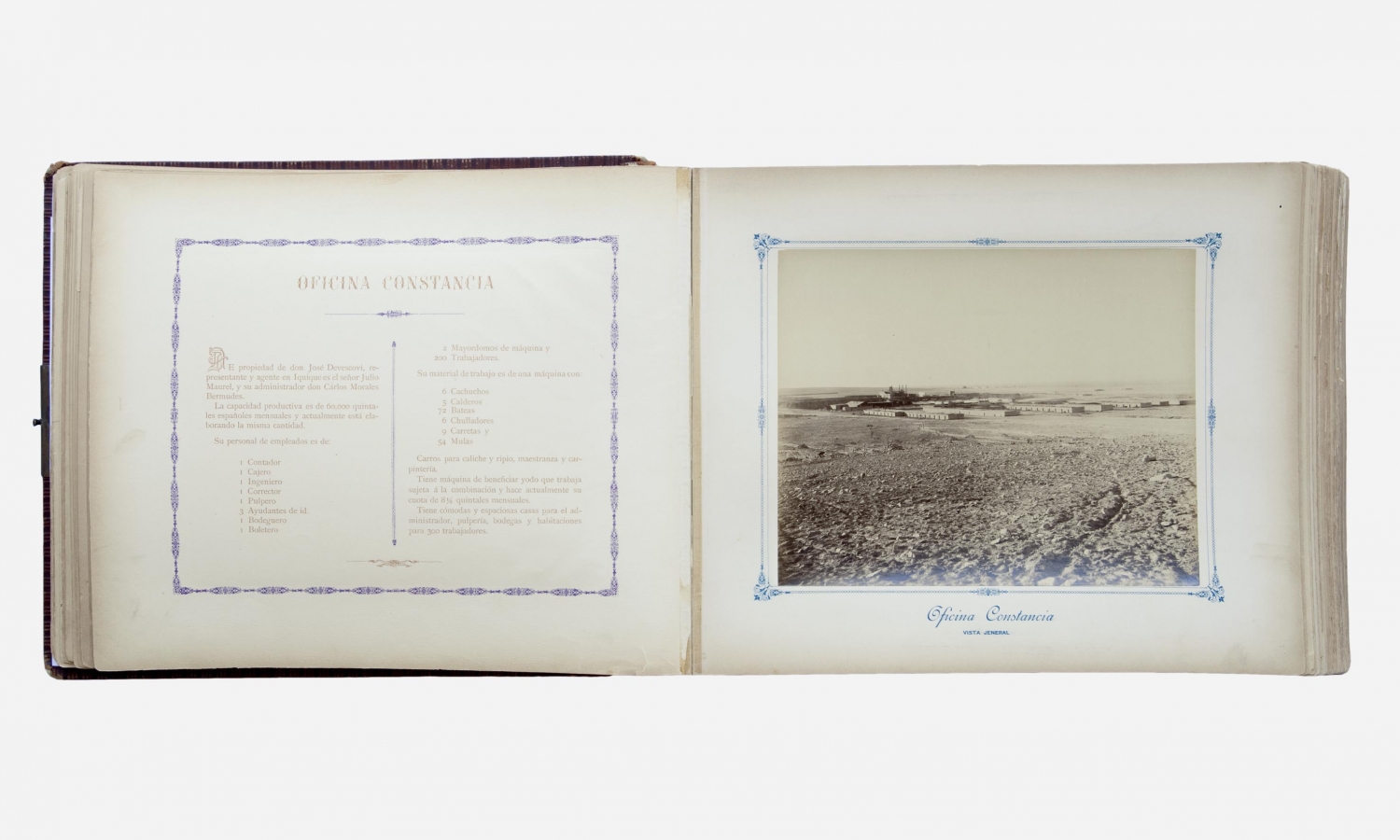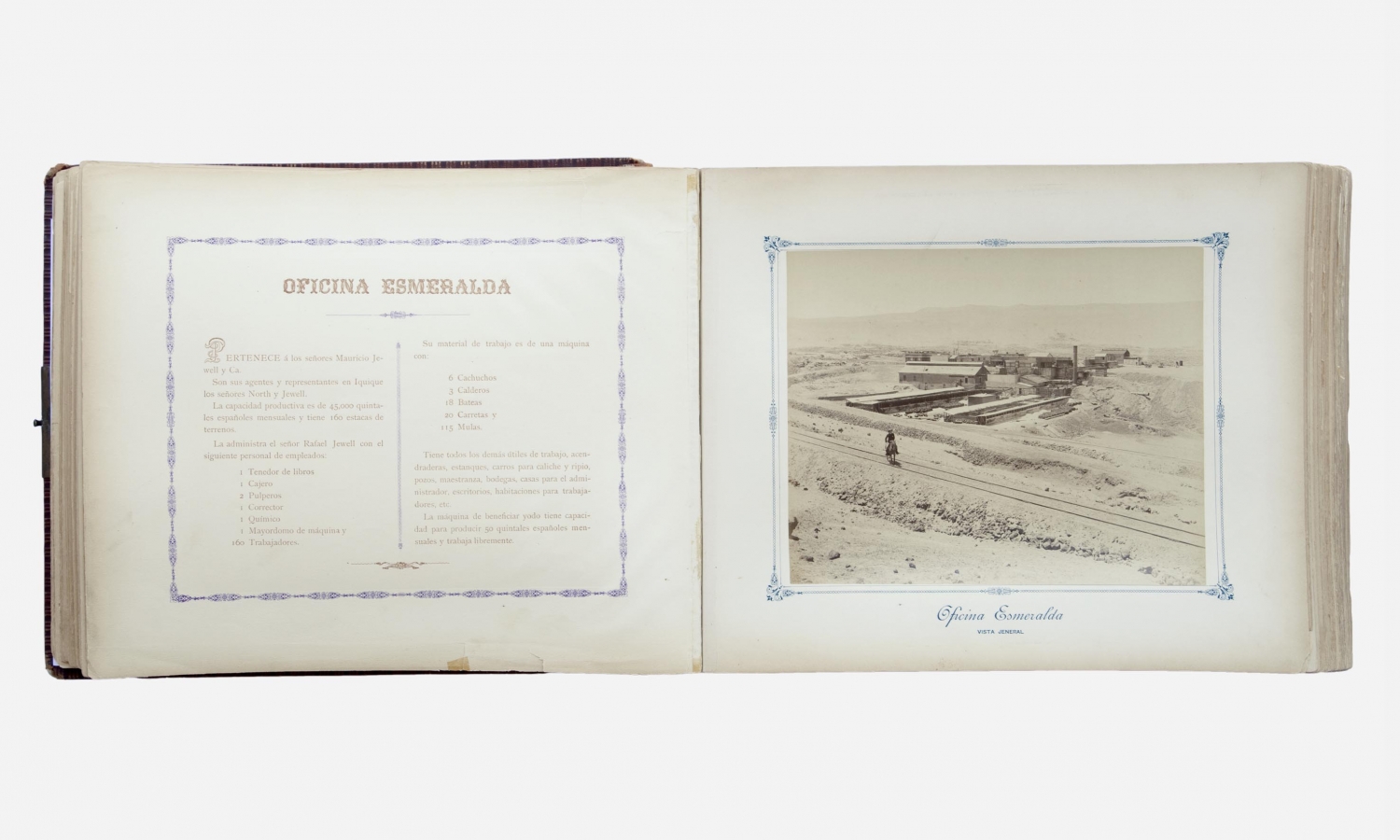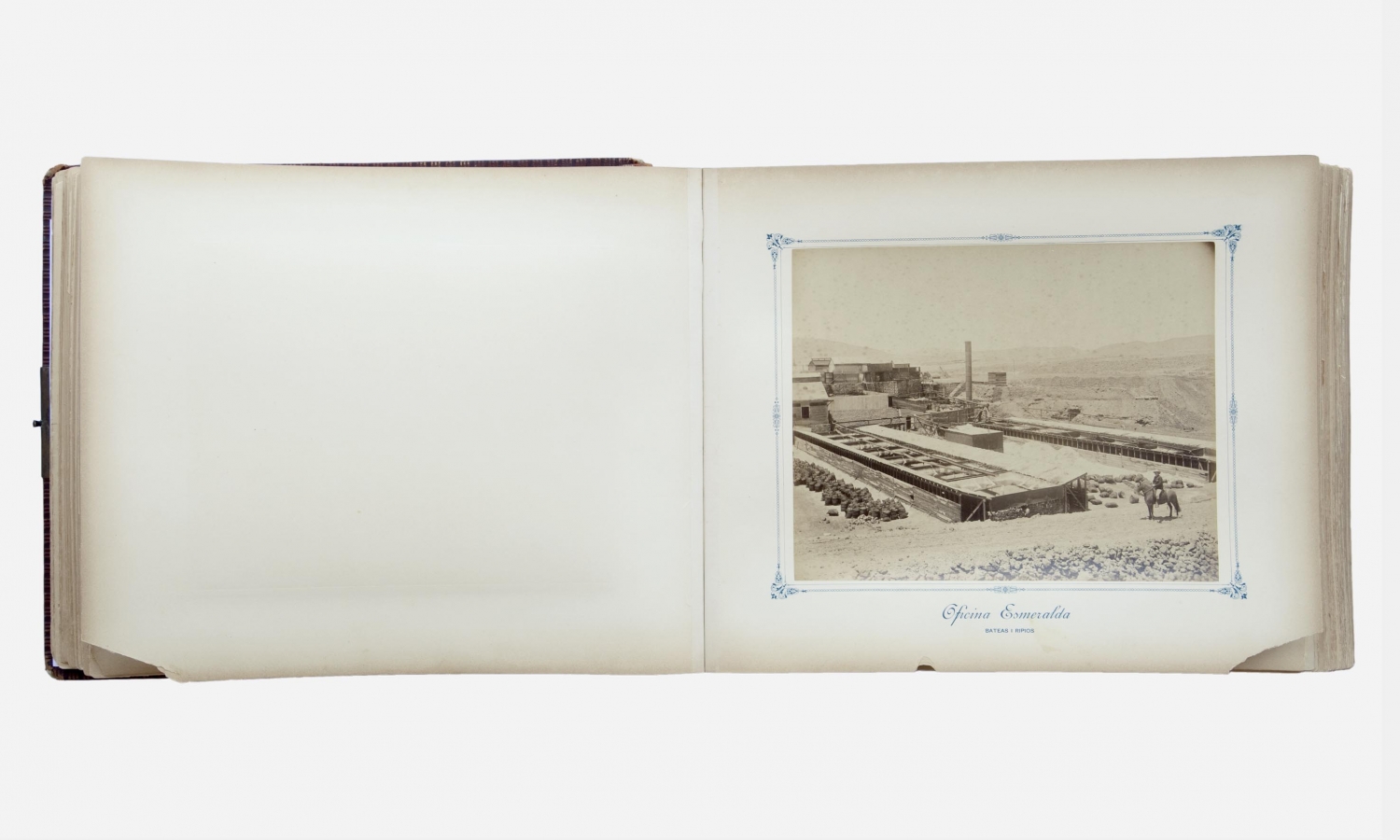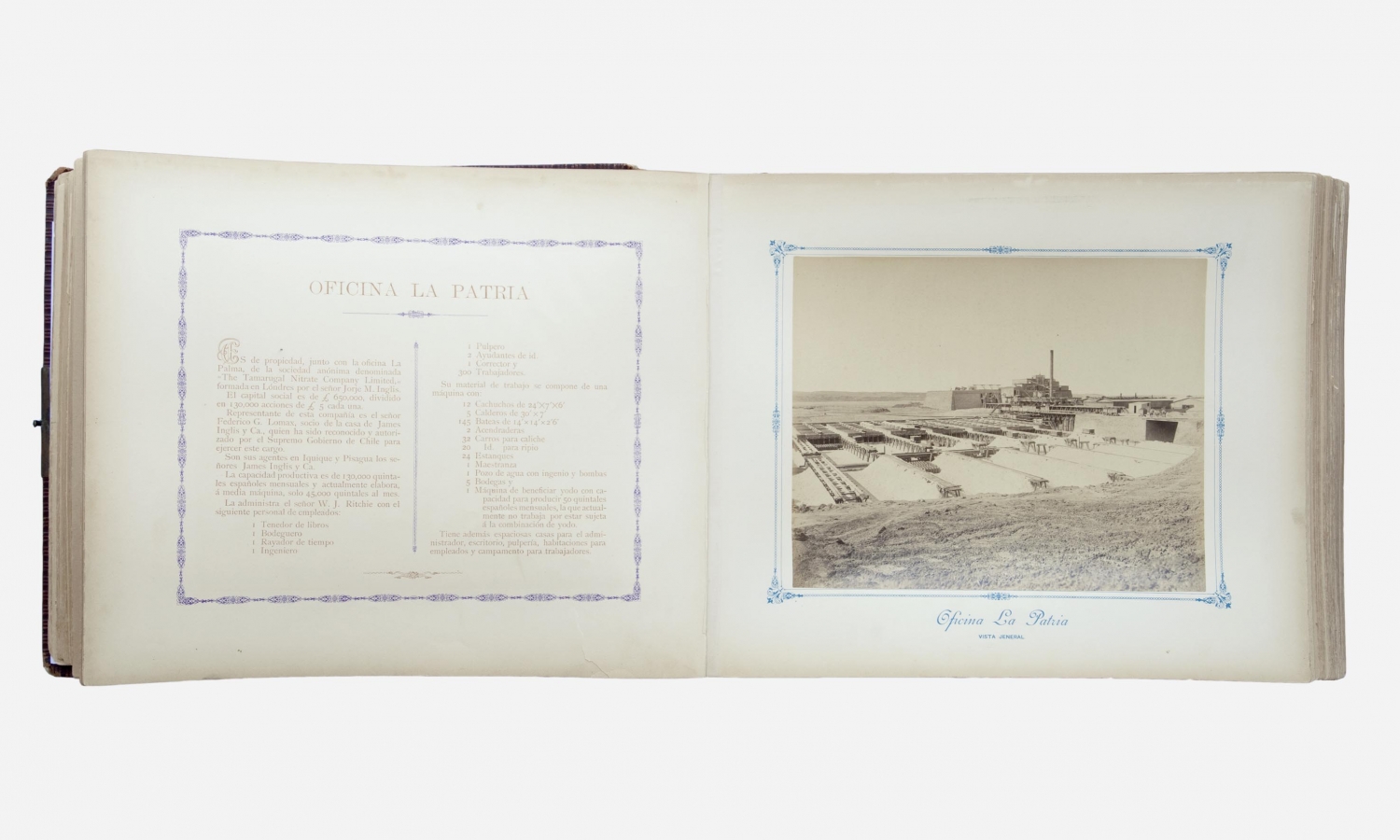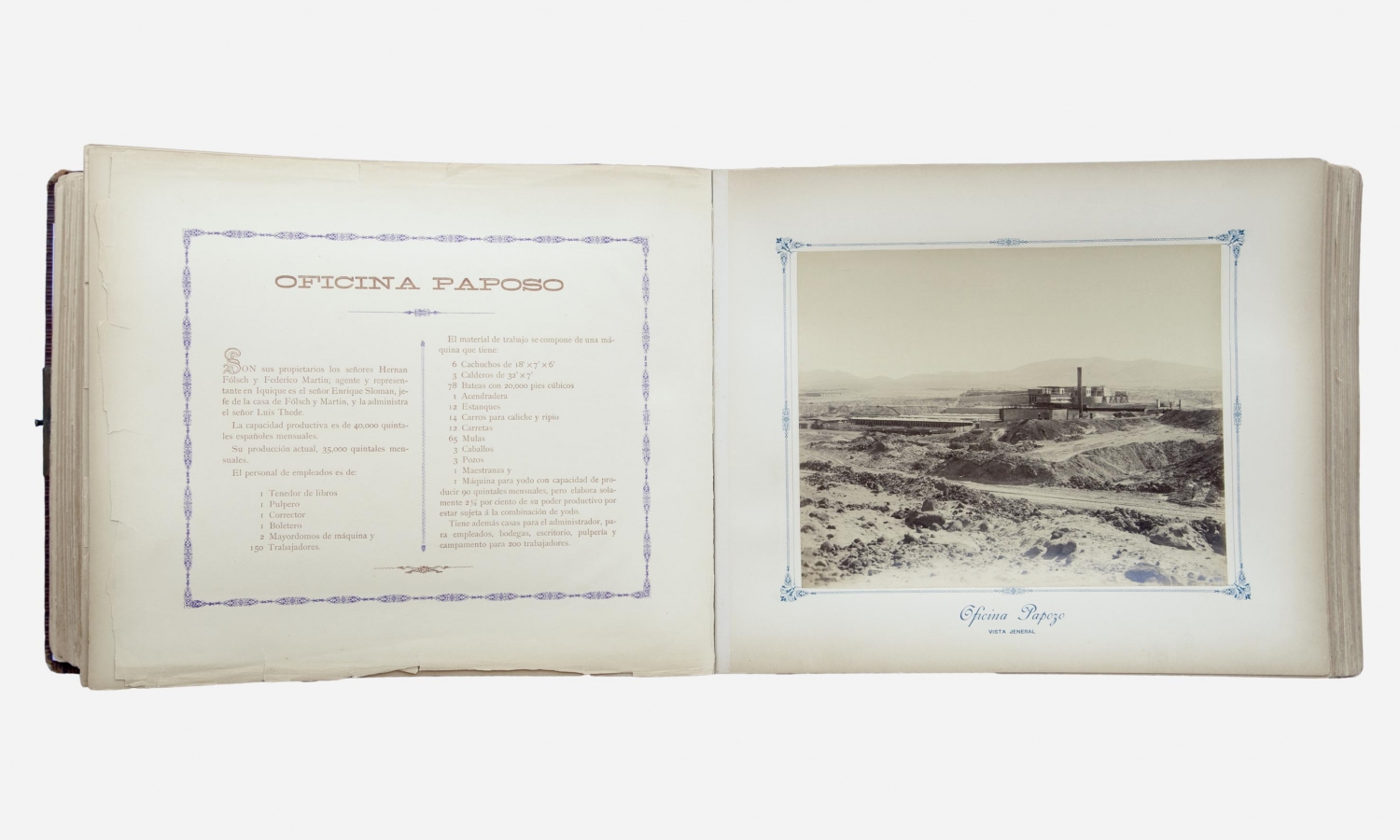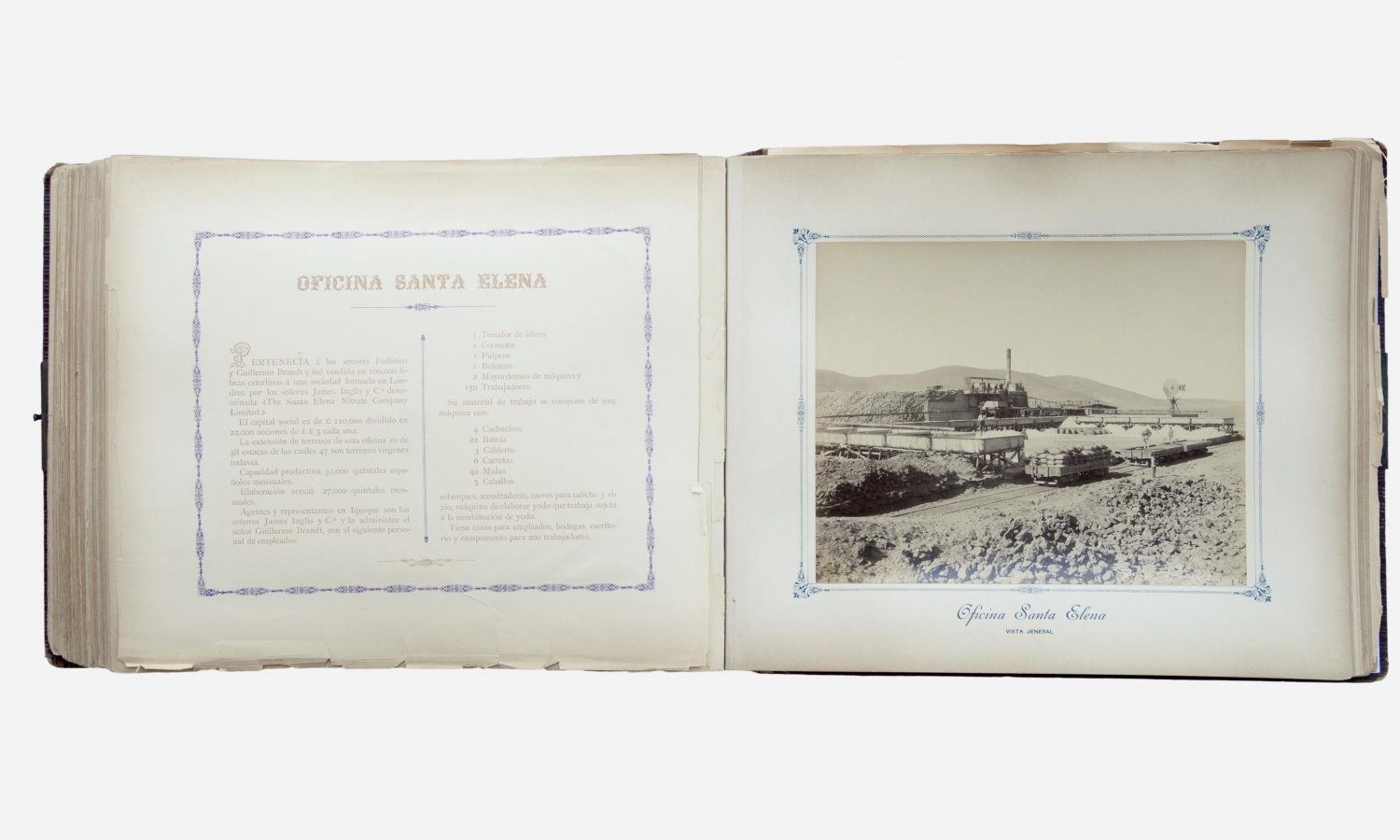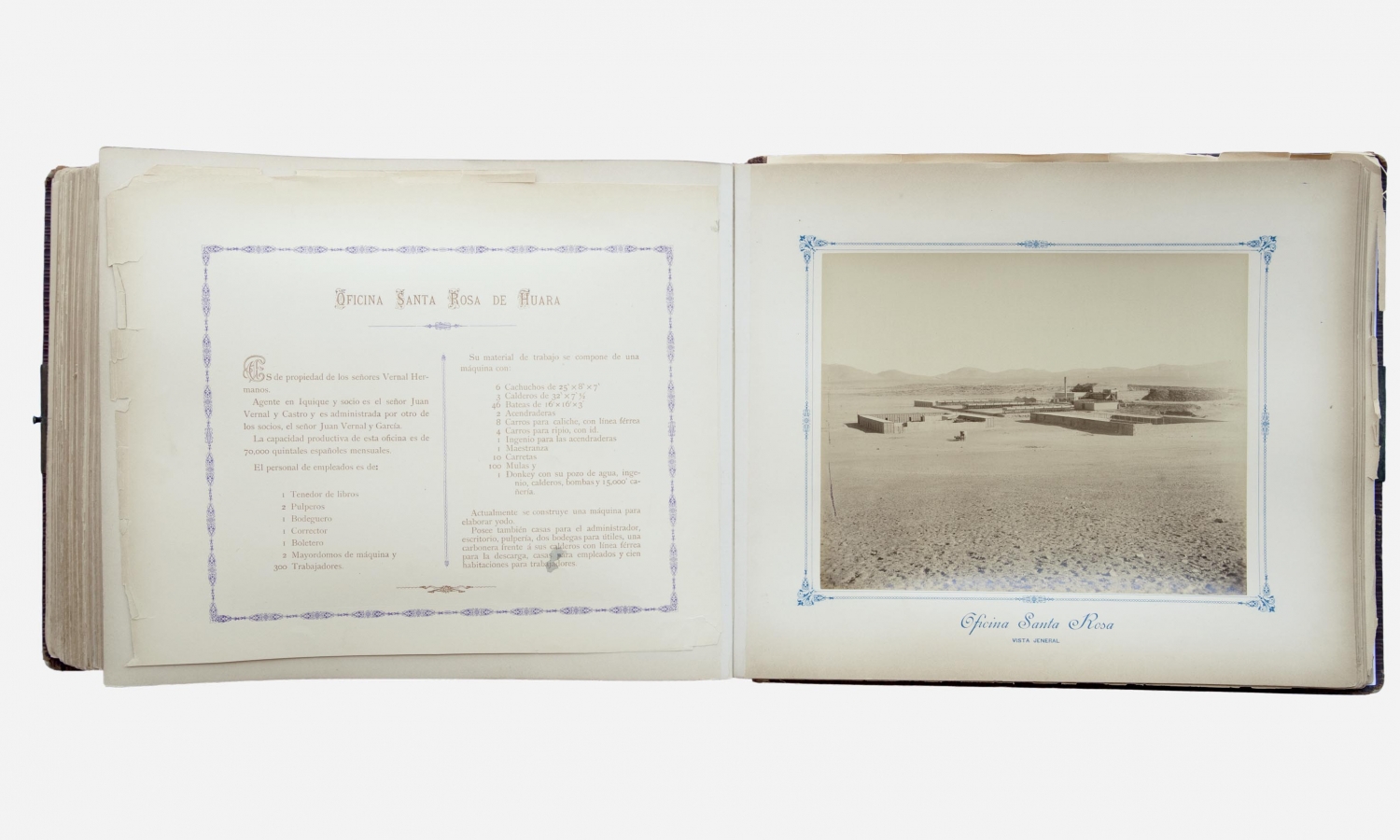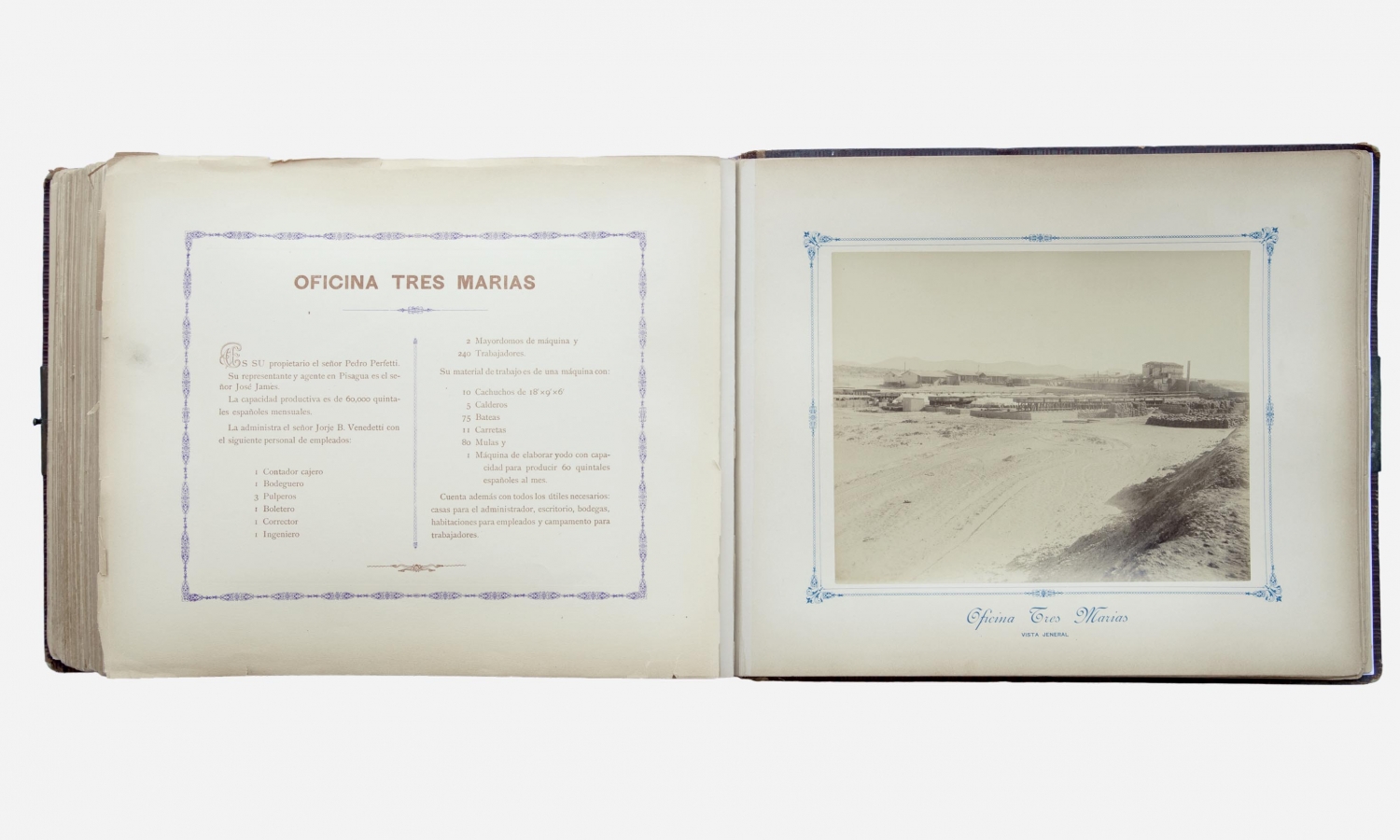Produced in 1889 by Louis Boudat, the photographic album Salitreras de Tarapacá is a family portrait of the nitrate producers, a statement of ownershipembedded with the rhetoric of colonial capitalism.
ALBUMS AND JOURNEYS [2]
Artist/Author: Xavier Ribas
All the known photographs of the nitrate oficinas of the time were made for or by the nitrate producers, as representations of investment or as documentation of the production cycle. These photographic albums now pass as the official photographic history of nitrate. Alongside the photographs of Oficina Alianza, the album Salitreras de Tarapacá is the other most important surviving record of the nitrate industry at the end of the nineteenth century. It was produced in 1889 by Louis Boudat, a French photographer based in Iquique.
Salitreras de Tarapacá was put together on the occasion of the first 'combination' of nitrate producers, a syndicate organised to regulate production and maintain the price of Chilean nitrate on world markets. It documents the most important nitrate works of the time, giving information about their directors, traders and managers, as well as details of their production, machinery and work force. The album is like a family portrait of the nitrate producers, and a statement of ownershipembedded with the rhetoric of colonial capitalism: large open views of production and investment, a consolidated force of foreign producers, a desolate landscape put to work.
As in the album Oficina Alianza and Port of Iquique 1899 sent to Lord Aldenham, in these photographs the nitrate workers appear caught not in the moment of work but still, mostly looking at the camera, in the open fields or in front of machinery. Their detained bodies 'in the shape ofwork', their poses as if working, presumably following the photographer's instructions, inhabit the moment of photography. They appear as an extension of the machines, or as part of the landscape, an indication of scale and distance. Imagining the nitrate industry of the time, one must read the out-of-frame and between-the-lines of these nineteenth-century photographs and their captions, charged with the rhetoric of capital. One has to work against them, as the time they were made was a time of great unrest and violent repression, a memory they do not contain. In order to see the body of the worker at the very moment of work one has to find other photographs. (1)
(1) The album was photographed in the house of Don Santiago Keith in Tiliviche. Don Santiago is the grandson of Mr Adam Keith, an Irish farmer who was brought to Chile in 1870 by Mr Outram, owner of the San Antonio and Jazpampa Nitrate Company, to work an oasis farm belonging to them in order to produce forage for their horses and mules. The farm was later bought from the company by Adam Keith and it is still in the family. On the farm is the oldest British cemetery in Chile, which is being looked after, with great care but scarce resources, by Don Santiago.


